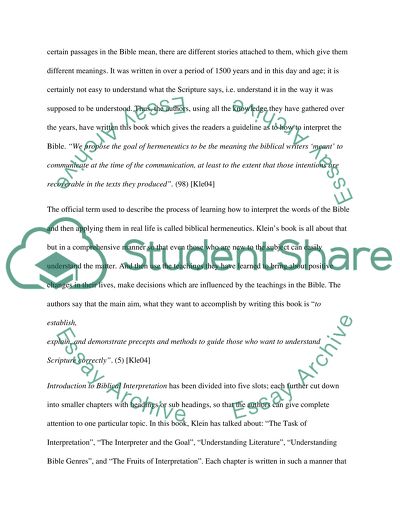Cite this document
(“Introduction to Biblical Interpretation, by William W. Klein Book Report/Review”, n.d.)
Introduction to Biblical Interpretation, by William W. Klein Book Report/Review. Retrieved from https://studentshare.org/religion-and-theology/1401692-name-of-the-book-introduction-to-biblical
Introduction to Biblical Interpretation, by William W. Klein Book Report/Review. Retrieved from https://studentshare.org/religion-and-theology/1401692-name-of-the-book-introduction-to-biblical
(Introduction to Biblical Interpretation, by William W. Klein Book Report/Review)
Introduction to Biblical Interpretation, by William W. Klein Book Report/Review. https://studentshare.org/religion-and-theology/1401692-name-of-the-book-introduction-to-biblical.
Introduction to Biblical Interpretation, by William W. Klein Book Report/Review. https://studentshare.org/religion-and-theology/1401692-name-of-the-book-introduction-to-biblical.
“Introduction to Biblical Interpretation, by William W. Klein Book Report/Review”, n.d. https://studentshare.org/religion-and-theology/1401692-name-of-the-book-introduction-to-biblical.


